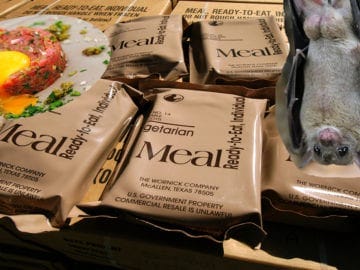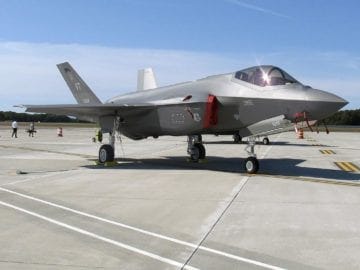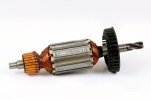Personal/home tests are coming soon. I see the point. Not exposing health care folks, greater coverage, less expense, etc. But I was told the swab of the nose is required to go way deep into sinuses. Most medical types with experience in this type of test say it simply can not be done with any reliability by an armature, let alone self administration. The false negative rate will likely skyrocket and waste lab resources.Anyone seen Type I/Type II error rates for the COVID tests? I imagine the general public doesn't realize most of these tests are far from 100% accurate.
-
Please take a moment and update your account profile. If you have an updated account profile with basic information on why you are on Air Warriors it will help other people respond to your posts. How do you update your profile you ask?
Go here:
Edit Account Details and Profile
You are using an out of date browser. It may not display this or other websites correctly.
You should upgrade or use an alternative browser.
You should upgrade or use an alternative browser.
COVID-19
- Thread starter Treetop Flyer
- Start date
☠
Reminds me of a not completely facetious cold war VS tactic for safe transit of a CV. War Hoovers ranging out on PIM dropping B-57s and the CV steaming at flank speed from one smoking hole to the next. No idea where the sub is, but it ain't anywhere near where you just detonated a thermonuclear device. ?☠So, you're saying COVID-19 testing is like acoustic "screening" with dipping helos?
"We know the sub (virus) isn't in that water column (person) right now, but we have no idea where it might be in a few minutes (days)."
exNavyOffRec
Well-Known Member
That is the frustrating part, and what is causing people to freak out, that and people only hear half of what is being said in any briefing.All the mathematical models and projections I've seen fail to account for some variable or another,
There was one model that it looks has since been removed, that showed if WA started with complete lock down about a week ago we would still have a few thousand people hospitalized with coronavirus, currently there are just over 2K infected in WA. It is nuts how off some of these are.
☠
Reminds me of a not completely facetious cold war VS tactic for safe transit of a CV. War Hoovers ranging out on PIM dropping B-57s and the CV steaming at flank speed from one smoking hole to the next. No idea where the sub is, but it ain't anywhere near where you just detonated a thermonuclear device. ?☠
Fuck that.
Damn DuffelBlog!!

 www.duffelblog.com
www.duffelblog.com

DoD quietly pulls bat tartare MRE from circulation
WASHINGTON — Everyone's favorite MRE will no longer be available a Pentagon spokesperson admitted in a press conference yesterday. There have been no incidents with the bat tartare entree, according to the DoD, but officials are concerned that everyone, except maybe the Marines, will now be...
This one is a gem too...

 www.duffelblog.com
www.duffelblog.com

F-35 tests positive for Coronavirus
EDWARDS AIR FORCE BASE, California — As the saga of seemingly never-ending problems plaguing the F-35 Joint Strike Fighter Program continues, things took took an unexpected turn this past week, as the unhealthy aircraft has tested positive for coronavirus.
TYFYSPersonally, I’ve got enough beer from the brewery I volunteer at to last me until the zombies come, so no complaints here.
If I understood correctly, my flight doc today said in our DH meeting that there's a 25% misdiagnosis rate for the test (at least the ones the base is using).Anyone seen Type I/Type II error rates for the COVID tests? I imagine the general public doesn't realize most of these tests are far from 100% accurate.
Any test should have both Type I (false positive) and Type II (false negative) probabilities. Often the sensitivity of the test is adjusted to strike the right balance. If the chance of death once infected is high, you might want to fail towards more false positives. If the cure is risky (major surgery, chemo, etc.), you might be more averse to Type II errors.TYFYS
If I understood correctly, my flight doc today said in our DH meeting that there's a 25% misdiagnosis rate for the test (at least the ones the base is using).
The same thinking is used to tune most ASE to ensure threats are almost always detected while not false alarming so much pilots quit listening. Same is done with GPWS/TAWS.
He mentioned both "false positives" and "false negatives" and the number he threw out was 25%.Any test should have both Type I (false positive) and Type II (false negative) probabilities. Often the sensitivity of the test is adjusted to strike the right balance. If the chance of death once infected is high, you might want to fail towards more false positives. If the cure is risky (major surgery, chemo, etc.), you might be more averse to Type II errors.
The same thinking is used to tune most ASE to ensure threats are almost always detected while not false alarming so much pilots quit listening. Same is done with GPWS/TAWS.
So...??
It's possible the two errors are equal. I don't know the nature of the test. It's also possible, but weird, that the number quoted is the rate of all errors (I + II) across all test results. Also, ?He mentioned both "false positives" and "false negatives" and the number he threw out was 25%.
So...??
The currently deployed tests are based on detecting viral nucleic acid. I haven't been able to find sensitivity or specificity info on line, but I have seen gripes about the lack of that information in the open literature, so maybe it isn't just me. The FDA literature says that the tests have been designed to minimize the false positive rate, suggesting the cutoff values favor specificity (i.e. true positives).
The currently available test doesn't help much with defining the epidemiology, since it is truly a snapshot. A negative test cannot discriminate between someone who is unexposed and uninfected, an asymptomatic infected person early or late in the infection, whose viral load is below the cutoff for a positive test, and a person who has been infected and recovered. Tests that measure antibody formation can give you information regarding that group of asymptomatic but infected patients. I haven't seen anything currently available that uses serology for Coronavirus testing.
There are a couple glaring problems with mass testing as implemented. As the test seems to be biased toward true positives, it isn't a great screening test. Another big problem is there isn't a clearly defined effective treatment, so diagnosing the disease doesn't give you all that much actionable intelligence. Once a treatment becomes available, mass testing with an adjustment of the test characteristics or methodology has a place. Finally, a negative test may lend a false sense of security, again as the available test appears to be weighted away from sensitivity, and that viral RNA may be present, but below the test cutoff, and could be either rising or falling depending on where in the course of the illness the patient may be. Oh, and the test takes 48-72 hours to yield results.
V/R
The currently available test doesn't help much with defining the epidemiology, since it is truly a snapshot. A negative test cannot discriminate between someone who is unexposed and uninfected, an asymptomatic infected person early or late in the infection, whose viral load is below the cutoff for a positive test, and a person who has been infected and recovered. Tests that measure antibody formation can give you information regarding that group of asymptomatic but infected patients. I haven't seen anything currently available that uses serology for Coronavirus testing.
There are a couple glaring problems with mass testing as implemented. As the test seems to be biased toward true positives, it isn't a great screening test. Another big problem is there isn't a clearly defined effective treatment, so diagnosing the disease doesn't give you all that much actionable intelligence. Once a treatment becomes available, mass testing with an adjustment of the test characteristics or methodology has a place. Finally, a negative test may lend a false sense of security, again as the available test appears to be weighted away from sensitivity, and that viral RNA may be present, but below the test cutoff, and could be either rising or falling depending on where in the course of the illness the patient may be. Oh, and the test takes 48-72 hours to yield results.
V/R
Thank you for posting this, a lot of it is over my head but it is great info. The way I read it tho is... Basically 42% are infected right?The currently deployed tests are based on detecting viral nucleic acid. I haven't been able to find sensitivity or specificity info on line, but I have seen gripes about the lack of that information in the open literature, so maybe it isn't just me. The FDA literature says that the tests have been designed to minimize the false positive rate, suggesting the cutoff values favor specificity (i.e. true positives).
The currently available test doesn't help much with defining the epidemiology, since it is truly a snapshot. A negative test cannot discriminate between someone who is unexposed and uninfected, an asymptomatic infected person early or late in the infection, whose viral load is below the cutoff for a positive test, and a person who has been infected and recovered. Tests that measure antibody formation can give you information regarding that group of asymptomatic but infected patients. I haven't seen anything currently available that uses serology for Coronavirus testing.
There are a couple glaring problems with mass testing as implemented. As the test seems to be biased toward true positives, it isn't a great screening test. Another big problem is there isn't a clearly defined effective treatment, so diagnosing the disease doesn't give you all that much actionable intelligence. Once a treatment becomes available, mass testing with an adjustment of the test characteristics or methodology has a place. Finally, a negative test may lend a false sense of security, again as the available test appears to be weighted away from sensitivity, and that viral RNA may be present, but below the test cutoff, and could be either rising or falling depending on where in the course of the illness the patient may be. Oh, and the test takes 48-72 hours to yield results.
V/R
JHU CSSE COVID-19 tracker Found this interactive map and figured I'd share it for all you data nerds.


